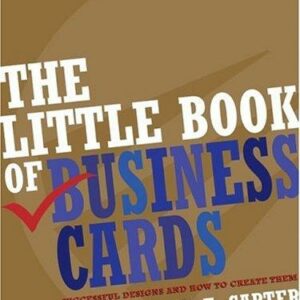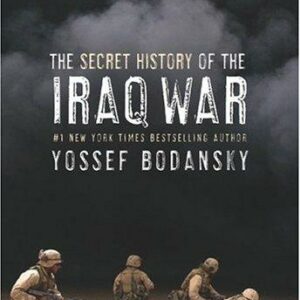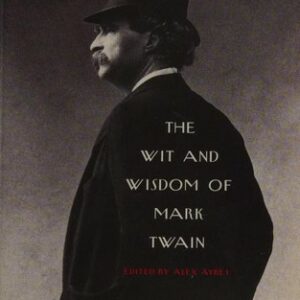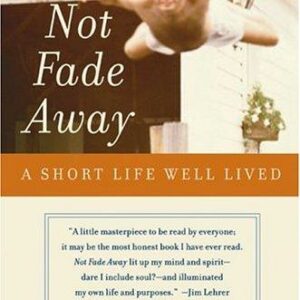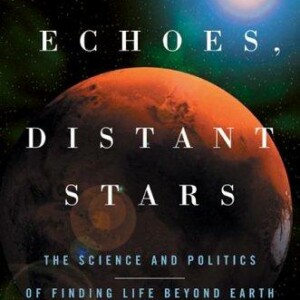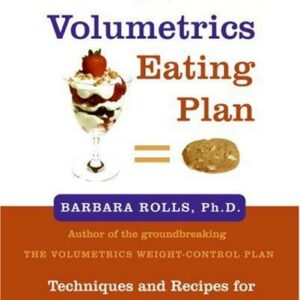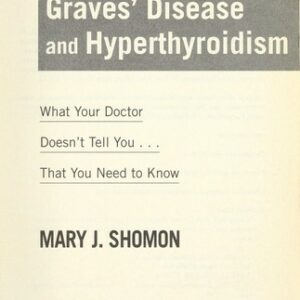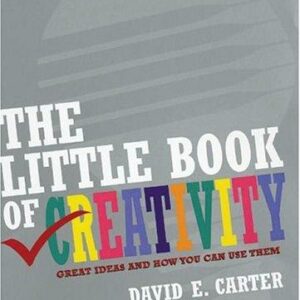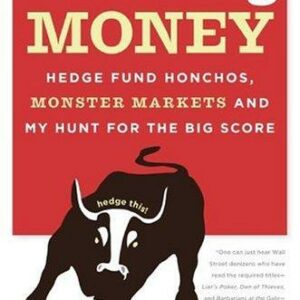Theodore Roosevelt
$19.00
| Title | Range | Discount |
|---|---|---|
| Trade Discount | 5 + | 25% |
- Description
- Additional information
Description
He inherited a sense of entitlement (and obligation) from his family, yet eventually came to see his own class as suspect. He was famously militaristic, yet brokered peace between Russia and Japan. He started out an archconservative, yet came to champion progressive causes. These contradictions are not evidence of vacillating weakness: instead, they were the product of a restless mind bend on a continuous quest for self-improvement.
In Theodore Roosevelt, historian Kathleen Dalton reveals a man with a personal and intellectual depth rarely seen in our public figures. She shows how Roosevelt’s struggle to overcome his frailties as a child helped to build his character, and offers new insights into his family life, uncovering the important role that Roosevelt’s second wife, Edith Carow, played in the development of his political career. She also shows how TR flirted with progressive reform and then finally commited himself to deep reform in the Bull Moose campaign of 1912. Incorporating the latest scholarship into a vigorous narrative, Dalton reinterprets both the man and his times to create an illuminating portrait that will change the way we see this great man and the Progressive Era.“Thoughtful. . . . Perceptive and entertaining. . . . A fresh look at TR.” –-The Boston Globe
“Offers an exquisite portrait of TR in a biography that towers over competing accounts for its shrewd insight into a complex American statesman.” —Flint Journal
“A fresh look at TR. . . . More than any other president, he embodied the virtues of energy, vitality and self-improvement.” —The Washington Post
“Provid[es] insights both original and important. . . . May be the best of a large number of very good biographies.” —Richmond Times –Dispatch
Kathleen Dalton is Cecil F.P. Bancroft Instructor of History and Social Science at Phillips Academy, Andover and a Consulting Historian for the National Park Service. She was formerly a Fellow at Charles Warren Center for Studies in American History at Harvard University and a Gilder-Lehman research fellow in New York. Educated at Mills College and Johns Hopkins University, she has been studying Theodore Roosevelt since 1975. She is the author of several articles on Theodore Roosevelt and his times. She lives in Andover, Massachusetts, with her husband, the historian E. Anthony Rotundo, and their two children.CHAPTER ONE
The Handicap of Riches
A merican presidents are not supposed to start out in life the way Theodore Roosevelt did. His was not a rags-to-riches story begun in a log cabin. He lacked humble origins. He could make no steady climb from modest economic beginnings toward the apex of fame or fortune because he was born near the top in wealth and social standing. Unlike Abraham Lincoln and Richard Nixon, he also did not have the type of sainted, self-sacrificing mother who could inspire his aspirations for a better life.
Instead, TR was born blessed with a millionaire grandfather and a distinguished family name. When he remembered his childhood, he had his sainted patrician father to thank for guiding his ascent. His privileged station, however, did not insulate him from facing serious trials in life. TR was born to wage a different kind of battle. Ahead of him lay a fateful struggle for life and identity-a fight grueling enough to allow him to see himself as a classic American self-made man.
Roosevelt’s task of self-making began with the work of living up to past greatness. Often, when TR told the story of his childhood he began not with himself, but with his family’s high standing. Proud to tell of his elite origins he wrote: "I was born in New York, October 27th 1858; my father of old dutch knickerbocker stock; my mother was a Georgian, descended from the revolutionary Governor Bulloch."1
TR’s father, Theodore Roosevelt Senior (called Thee), gave his first son his name and admitted he loved him best of his four offspring. But with such favored love came the weight of familial expectations. The senior Roosevelt would look to young TR to prove he had enough "stern old Dutch blood" coursing in his veins to bring credit to the Roosevelt name.2
Roosevelts had been men of consequence, members of the Knickerbocker elite who had provided New York with leadership for generations. The family rose to economic prominence after the American Revolution when Isaac Roosevelt added Tory farmland to the family’s already large holdings. The Roosevelts became one of the city’s "governing families." TR’s grandfather C.V.S. Roosevelt, a conservative merchant who thought of little besides trade, turned the family hardware business into a plate-glass importing firm, using his profits to buy up more Manhattan real estate. He later became a founder and director of the Chemical National Bank. C.V.S. Roosevelt’s brother, Judge James I. Roosevelt, had been a congressman and prominent member of the New York Democratic Party before he was appointed to New York’s highest court. Wealth, power, and social standing were part of the heritage Theodore was expected to preserve.3
Roosevelts, however, did not need to hold office to exercise power. The rise of popular voting rights in the Jacksonian age and the later arrival of vast numbers of immigrant voters, who were managed at the ballot box by Democratic Tammany Hall leaders and other competing bosses, challenged the old elite to fight harder than ever to shape their city’s culture and politics. Businessmen eager for low labor costs initially welcomed rural and foreign newcomers, but they were thereafter unprepared to deal with competition in the political realm from bosses and their immigrant supporters and a large and often unemployed working class who hovered on the edge of starvation. In a chaotic city with a skyrocketing murder rate, twenty thousand prostitutes, an ineffective police force, gang rapes, highway robbery, and street fights, the old elite unfairly blamed the crisis on the wretched morals of the poor and the bosses who represented them in politics.
Men like the Roosevelts fought Democratic Boss Tweed when he insisted on fire protection by volunteer companies manned by his political cronies. The anti-Tweed forces won the right to hire a professional salaried fire company, and then further modernized Manhattan’s government by creating a Metropolitan Board of Health that enforced new disinfectant codes and street-cleaning regulations. The anti-Tweed Citizens Association, so heavily funded and publicly led by Theodore’s closest relatives that it was called a Rooseveltian oligarchy, finally ousted Tweed from power when Theodore was in his teens. Before he was old enough to shave, he had learned from his intensely political uncles and his father how to use newspaper exposés and scandals to arouse public outrage and bring about reform.4
Thee worked in his father’s plate-glass importing firm, Roosevelt and Son, where he also managed the family’s immense real estate, stock, banking, mining, and insurance holdings. When Theodore was a boy, C.V.S. Roosevelt and his five sons owned Manhattan’s Piers Nine and Ten, a farm on Staten Island, land in upstate New York, stock in the New York Central Railroad, and property all over lower Manhattan. Thee and his brothers managed all their business concerns well enough to save time for civic reform and philanthropy, ministering with heartfelt noblesse oblige to the less fortunate members of society. The power of Roosevelt money and beneficence reverberated through Central Park, the Metropolitan Museum of Art, the American Museum of Natural History, Roosevelt Hospital, the Bellevue Training School for Nurses, the Children’s Aid Society, and Thee’s creation, the New York Orthopaedic Dispensary for the Deformed and Crippled.5
As a young man Theodore wrote with aristocratic pride: "The older races of the city made the mould into which the newer were poured." He did not doubt the value of leadership by those who presumed they were "the best men," but in his mature years he would take the position that the cultural authority and political power which accrued to his kind because they were upper class was built upon a system of unjust privilege. During Theodore’s boyhood the old elite worked hard to remain keepers of the "mould" by incorporating newer industrial elites into their businesses, clubs, philanthropies, and social circles, where they taught them to invest in the cultural future of the city. Together they hoped to make New York a grand and dignified city worthy of pride around the world, rather than the stink hole of greedy commercialism and crime it was reputed to be. Not that nouveau riche stock traders and magnates like Jim Fisk and Jay Gould who used bribery and deception to corner markets after the Civil War were easily remade morally. The old elite remained suspicious of the suddenly rich who were "vikings in energy, unscrupulousness and violence, who swept through the land in railroad land grabs, in mining speculations, in purchase of legislatures, in stock dilutions, in great corners on stocks and grains."6
The striving industrial culture that emerged after the Civil War called upon elite women, presumed to be angelic repositories of morality, to elevate the moral tone of polite society by drawing clear social lines. When Caroline Astor stepped forward in the 1870s to form a bastion of gentility which became the socially select Four Hundred, Thee acted as one of her Patriarchs who extended invitations to grand balls to new and old worthies while excluding climbers with low morals. Edith Wharton in her Age of Innocence portrayed Knickerbockers like the Roosevelts as the van der Luydens, lofty patricians who expected to arbitrate a chaotic new society by speaking as the voice of cultural authority. Thee raised Theodore within the upper-class "mould" of old New York: he taught his son how to behave in receiving lines and when to wear patent leather shoes and a black tie. Most significantly, he provided him with a loving example of how one man can use his privilege to make society better.7
Thee had traveled enough as an importer and on Grand Tours to see that New York was inferior to the great European cities that he regarded as the vanguards of advancing world civilization. To bring home to Manhattan the benefits of the British Museum and the Louvre, he helped to found the American Museum of Natural History and planned the first building and the fledgling collections of the Metropolitan Museum of Art. His philanthropy applied science and art to the cause of making New York a more civilized city, and he favored the modernizing benefits of a cleaner water supply, less partisan police and firemen, and public health enforcement. Thee also hobnobbed with muscular Christians like Thomas Hughes in England, and became a convert to their belief that religion had become too feminized and ethereal and needed to be reformed by a spirit of aggressive manliness and athleticism. Rejecting the image of Jesus Christ as gentle, saintly, and long-suffering, muscular Christians reinterpreted him as a soldier of righteousness and vigor. They argued that training boys to see their bodies as one means of salvation, a "living sacrifice to God," was the best method to keep them away from sensuousness and self-indulgence. Not long after the Reverend Charles Kingsley began preaching muscular Christianity in England, his counterpart in the states, Bishop Phillips Brooks, spread his belief that "physical courage is a grand and precious thing" tied intimately with true Christian faith.8 The Reverend Thomas Wentworth Higginson popularized the idea further that men could be made soldiers in service to Christ by toughening themselves with sports, and Brooks’ hymn "Onward Christian Soldiers" spread the new muscular Christian cause across pews to schools and playing fields. Thee and his friends put the same spirit to use in reform and philanthropy to rejuvenate urban life in New York.9
To help the poor man climb and the wealthy man resist sin, Thee promoted muscular Christianity through the Young Men’s Christian Association, the Children’s Aid Society, and later through Dwight L. Moody’s urban revivals. Thee worried that in an era when many youths moved to the city and stopped attending church, $4 million was being spent each year on the newly commercialized vice industry-from billiard saloons and brothels to "gambling hells" and pornographic bookstands. Vice and sin on an individual level were bad enough, but moral reformers like Thee believed that new businesses designed to commercialize sex (via dance halls, pornography, and brothels) sought to make huge profits out of pandering to human weakness-and, in doing so, pulled the whole society down. "Satan’s empire" had to be stopped.
For Theodore, his father’s muscular Christian cures defined the terms of his upbringing and his own later diagnosis of what ailed American culture. Theodore learned at his father’s knee that Christ himself was not a self-effacing saint but a "strong man physically, muscular, sinewy, enduring," a man who embodied moral purity and, in the Darwinian language of the day, "healthy animalism." Thee and his close friend William E. Dodge, Jr., saw to it that young clerks who moved to the city would have barbells and Bibles to help them withstand temptation in the new Y.M.C.A. building they erected in the Roosevelts’ neighborhood. Thee often took Theodore with him when he preached manly fortitude and purity to the newsboys at his friend the Reverend Charles Loring Brace’s Newsboys’ Lodging House and his other missions. He made sure that Brace’s houses provided boys with boxing gloves, horizontal bars, and exercise equipment because he believed they helped boys fight the "weakening of true masculine vigor, . . . [and] a hidden growth of secret and contagious vices" so rampant in their city. Thee’s muscular Christianity argued not for dog-eat-dog social Darwinism or survival of the fittest, but for Christian obligation that man owed man across class divides. Like the rich benefactors in the popular stories written by Brace’s other prominent patron, Horatio Alger, Jr., Thee felt obliged to be the deus ex machina who offered the poor a helping hand out of poverty-buying them a ticket to Albany to make a new start, sending them a winter’s load of coal to heat their homes, or paying for their children’s medical care. He even refused to acquire tenements because he did not want to profit from the meager earnings of the needy. Thee agreed with Brace’s view that a boy could be made manlier and therefore purer if he could "gratify ‘the savage in one’s blood,’ and lead a wild life in the woods," so the Children’s Aid Society with Thee’s help exported ninety thousand of New York’s pauper children to the countryside of the Midwest and West.10
Theodore learned that muscular Christian exercise and the nature cure were democratic forms of salvation insofar as they promised to revive any type of man, but none of the Roosevelts understood fully that the power of noblesse oblige enabled them to impose their cures on less powerful men and boys, who were not always eager to be saved in this fashion. Thee disliked those who did not practice what they preached, so he took his children to the countryside in the summer, and promoted his own manliness and morality by riding, camping, and playing active sports including polo, fox hunting, and tennis.11
Theodore’s atypical patrician boyhood, then, carried unusual lessons and examples. He was born into a clan who stood out among the New York elite as a strong, enduring, extended family self-assured in its outspokenness. His second cousin Nicholas wrote that "to be a Roosevelt was to be something distinctive-usually vital and energetic, often brilliant, generally intolerant, and always highly vocal. . . . they were openly and even zealously critical of each other." Their Hyde Park fifth cousin Franklin Delano Roosevelt later wrote that the longevity and "the virility of the Roosevelts" came from their "very democratic spirit," but Theodore’s branch of the family allied themselves with the barely democratic remnants of the Federalist elite, the Jays, Livingstons, and Schuylers. Even though they accepted republicanism, civic virtue, and democratic participation as basic American ideals, the Manhattan Roosevelts were what TR’s nephew Sheffield called "Dutch money-grubbers" who derived their clan identity from deep Hamiltonian, Federalist, and unequivocally aristocratic roots.12
TR grew up with a double legacy, carrying the weight of the Bulloch heritage of manly heroism as well. His southern mother, Martha "Mittie" Bulloch Roosevelt, made sure that her son heard about the military feats of her grandfather General Daniel Stewart in the American Revolution and her father, Major James Stephens Bulloch, a hero in Texas’ War for Independence.13
Even the political leaders within the battling Bulloch clan were never content to let others do their fighting for them. Mittie’s great-grandfather Archibald Bulloch, representative to the Continental Congress and commander in chief of Georgia at the outset of the American Revolution, personally led a war party against a Loyalist stronghold. Mittie’s father, the "impetuous" Major James Bulloch, after his fighting days were over, married his stepmother-in-law, Martha Stewart Elliott, and in a flurry of scandal over the marriage left Savannah behind, packed up his wife, their children from previous marriages, and slaves, and moved to Roswell, Georgia. In Roswell the Bullochs settled on land which the Cherokees had recently held, before gold was discovered and President Andrew Jackson forced the native people to walk to Oklahoma on the infamous Trail of Tears. Though much less blessed with commercial success than the Roosevelts, TR’s cavalier southern kin made their mark as a more daring and adventure-loving people.14
1. MOR 1:67.
2. CRR, My Brother, 4.
3. TR and FDR were descendants of early Dutch settler Claes Martenzsen Can Rosenvelt. Roosevelts owned slaves and allowed one of them to be burned at the stake due to an alleged slave revolt in New Amsterdam: Daniel Horsmanden, The New York Conspiracy, intro. Thomas J. Davis (1755; reprint, Boston, 1971), 471, and “The Roosevelt Family in America: A Genealogy,” Theodore Roosevelt Association Journal 16, nos. 103 (Winter/Spring/Summer 1990); I thanks Jill Lepore for alerting me to their slave owning; on the Tory farm, Eric Homberger, The Historical Atlas of new York (New York, 1994), 60-61; Kathleen Dalton, “The Early Life of Theodore Roosevelt” (Ph.D. diss., Johns Hopkins University, 1979); Edward Pessen, Riches, Class and Power Before the Civil War (Lexington, Mass., 1973), 136, 76, 10, 292; see also Edward K Spann, The New Metropolis: new York City, 1940-1857 (New York, 1981), 207-26; for C.V.S. Roosevelt’s property, see NR-SYR, TRSR-LB, Roosevelt Family Deeds in De Witt, Lockman & Kip Lawyers, Miscellaneous Manuscripts, NYHS; Howard K. Beale, “Theodore Roosevelt’s Ancestry; A Study in Heredity,” N.Y. Genealogical and Biographical Record, October 1954, 200; ARC-MS; History of the Chemical Bank, 1823-1913 (New York, 1913), 163, 165, 109; Roosevelt and Son, the Roosevelt piers, and Broadway Improvement Company paid off well into the twentieth century.
4. James C. Mohr, The Radical Republicans and Reform in New York During Reconstruction (Ithaca, N.Y., 1973); Robert Roosevelt owned, edited, and wrote articles for the organization’s newspaper, New York Citizen, and serves as an anti-Tammany Democratic congressman and member of the Committee of Seventy, which ousted Boss Tweed. Thee’s brother James Alfred donated funds and his brother S. Weir Roosevelt was elected to the city’s school board as a Citizens Association candidate. Thee signed petitions and endorsed Citizens Association candidates for office. Robert charged that Tammany was no more than “a howling mob of desperate wretches” who failed to represent the real working people and stood for prizefighters and criminals. He blamed Tammany for the deaths of 7,000 New Yorkers “by the want of sanitary regulation”: clipping, scrapbook #1, ‘Report f the Council of Hygiene and Public Health of the Citizens Association of New York upon the Sanitary Conditions f the City” (New York, 1885) and New York Citizen, Dec. 12, 1864, RBR Papers, NYHS; also RBR Papers, the Theodore Roosevelt Association offices; John Duffy, A History of Public Health in New York City, 1866-1966 (New York, 1974); Seymour J. Mandelbaum, Boss Tweed’s New York (New York, 1965); Alexander B. Callow, Jr., The Tweed Ring (New York, 1969(; Leo Hershkowitz, Tweed’s New York: Another Look (Garden City, N.Y.., 1978); Timothy J. Gilfoyle, City of Eros: new York City, Prostitution, and the Commercialization of Sex, 1790-1920 (New York, 1992); Edwin G. Burrows and Mike Wallace, Gotham: A History of New York City to 1898 New York, 1999).
5. TRSR-LB; “Roosevelt Family in America: Genealogy”; Charles Barney Whittelsey, The Roosevelt Genealogy, 1649-1909 (Hartford-Conn., 1902); interview with P. James Roosevelt, Mar. 21, 197; “The Roosevelt Copper Venture,” Copper, June 1907, 20-22; Roosevelt and Son employed child labor and imported plate glass from London and Manchester Plate Glass Co., with factories in St. Helens, England, until January 1876, when they stopped importing due to competition from domestic manufacturers: LeGrand B. Randall to Hermann Hgedorn, Maar. 11, 1921, SUBJ-TRC and NR-SYR. As a banker Thee collected on mortgage interest and loans; see Roosevelt Family and Business Papers, NYHS and TRSR-LB; Elizabeth Christophers Hobson, Recollections of a Happy Life (New York, 1916), 79-90.
6. “mould” in TR, New York (New York, 1895), 188; Henry W. Bellows, Historical Sketch of the Union league Club of New York: Its Origin, Organization, and Work, 1863-1879 (New York, 1879), 123-24.
7. Elizabeth Norris Emlen Roosevelt to ARC, Dec. 27, 1896, TRC-HU; ARC-MS; Constance (Mrs. Burton) Harrison, Recollections Grave and Gay (New York, 1911), 278; also Frederic Cople Jaher, “Style and Status: High Society in Late Nineteenth-Century New York,” in Jaher, ed., The Rich, the Well-Born, and the Powerful (Urbana, Ill., 1973); Jaher, The Urban establishment (Chicago, 1982); Kathleen M. Dalton, “Theodore Roosevelt, Knickerbocker Aristocrat,” New York History 67, no. 1 (January 1986): 39-65; Roy Rosenzweig and Elizabeth Blackmar, The Park and the People: A History of Central Park (Ithaca, N.Y., 1991), 23; Edith Wharton, The Age of Innocence (New York, 1962).
8. “sacrifice in J.A. Mangan, Athleticism in the Victorian and Edwardian Public School: the Emergence and Consolidation of an Educations Ideology (New York, 1981), 53; “physical courage” in Phillips Brooks, Essays and Addresses Religious, Literary and Social (New York, 1984), 323. on Hughes, ER to ARC, Nov. 21, n.y. [1880], RFP-FDR and Brian L. Stagg, “Tennessee’s Rugby Colony,” Robert M. McBride, ed., More Landmarks of Tennessee History (Nashville, 1969), 279; on muscular Christianity see Walter E. Houghton, The Victorian Frame of Mind, 1830-1870 (New Haven, 1951); letter from President Roosevelt to John R. Mott in introduction, John R. Mott, ed., The Claims and Opportunities of the Christian Ministry (New York, 1913), 7-12; Thomas Hughes, The Manliness of Christ (London, 1879); C. Howard Hopkins, History of the YMCA in North America (New York, 1994)l Clifford Putney, Muscular Christianity: Manhood and Sports in Protestant America, 1880-1920 (Cambridge, Mass., 2001); Laurence L. Doggett, History of the Young Men’s Christian Association (New York, 1922); John Higham, “The Reorientation of American Culture in the 1890s,” in Higham, ed., Writing American History: Essays on Modern Scholarship (Bloomington, Ind., 1970).
9. TRSR raised funds for the purchase of the Cesnola Collection, TRSR-LB; Nathaniel Burt, Palaces for the People: A Social History of the American Art Museum (Boston, 1977); Carol Duncan, “Art Museums and the Ritual of Citizenship,” in Ivan Karp and Steven D. Lacine, eds., Exhibiting Cultures: the poetics and Politics of Museum Display (Washington, D.C., 1991); “Higginson’s revival” had sparked popular enthusiasm for sports, especially ice skating. Higginson wrote about “purity and vigor” as naturally interconnected virtures: Out-door Papers 9Boston, 1863) ,159, and Atlantic Essays (Boston, 1871); John A. Kouwenhoven, Adventures in American, 1857-1900: A Pictorial Record from Harper’s Weekly (New York, 1938), picture 23l Sean Wilentz, Chants Democratic: New York City and the Rise of the American Working Class, 1788-1850 (New York, 1986), 354; Mangan, Athleticism in the Victorian and Edwardian Public School.
10. Muscular Christians performed good works and fought pornography; see Proceedings of the 18th Annual Convention of the Y.M.C.A. of North America, 1873; Emma Brace, ed., The Life of Charles Loring Brace: Chiefly Told in His Own Letters (New York, 1894), 295; Charles Loring Brace, The Dangerous Classes f new York, and Twenty Years’ Work Among Them (New York, 1880), 339. His system was controversial; many poor children left intact families only to be treated harshly as farmworkers: Miriam Z. Langsam, Children West (Madison, Wisc., 1964), viii, Robert Bremmer, American Philanthropy (Chicago, 1981), 64; see also Stephen O’Connor, Orphan Trainers: The Story of Charles Loring Brace and the Children He Saves and Failed (Boston, 2001), and Marilyn Irvin Holt, The Orphan Trains: Places Out in America (Lincoln, Nebr., 1992). Thee wanted the nature cure implicitly in Brace’s “placing out” system applied to other groups; sending the destitute inmates of New York’s House of Refuge to teach them “manly vigor.” Thee also took Theodore to rough it at Braces camp in upstate New York.
11. E. Brace, ed., Life of Charles Loring Brace, 170; C. L. Brace, Dangerous Classes, 410, 177; State Charities Aid Association, Theodore Roosevelt: Memorial Meeting (New York, 1878); Union League Club of New York, Theodore Roosevelt, Senior: A Tribute (New York, 1878), TRSR-LB; SUBJ-TRC.
12. Nicholas Roosevelt, ms. Draft of book on the Roosevelt family, NR-SYR, and Nicholas Roosevelt, A Front Row Seat (Norman, Okla., 1953); Franklin Delano Roosevelt, Notes on “Family,” RFP-FDR; interview, WSC, Jr., Apr. 13, 1977.
13. AUTO, 12, 27; ARC-MS; Dr. J.G.B. Bulloch, A History and Genealogy of the Families of Bulloch and Stobo and of Irvine of Cults (privately printed, n.d.), 20; Clarece Martin, A Glimpse of the Past: The History of Bulloch Hall and Roswell, Georgia (Roswell, Ga., 1973), 6-8. MSEB refused to wed her sweetheart, James S. Bulloch, and married Senator John Elliot; Bulloch married Elliott’s daughter Harriet. After Harriet and Hohn died, MSEB and Bulloch were finally married. MSEB’s children from her marriage to Elliot were Daniel, Hester and James’ son James Dunwody Bulloch. James Bulloch and MSEB’s children were Anna Bulloch Gracie (1833-93), Martha Bulloch Roosevelt (1835-84), Charles Irvine Bulloch (1837-40), and Irvine Stephens Bulloch (1842-98); David McCullough, Mornings on Horseback (new York, 1981), 41-42.
14. Charles C. Jones, Jr., The History of Georgia, vol. 2, revolutionary Epoch (Boston, 1883), 221, 229; ARC-MS; Martin, Glimpse, 6; Carleton Putnam, Theodore Roosevelt: the Formative Years (New York, 1958). 1.US
Additional information
| Weight | 25 oz |
|---|---|
| Dimensions | 1.4300 × 5.2700 × 7.8900 in |
| Imprint | |
| Format | |
| ISBN-13 | |
| Author | |
| Audience | |
| BISAC | |
| Subjects | US Presidents, political books, presidents, Theodore Roosevelt, biographies of famous people, world politics, political memoir, adventure books, best books, autobiographies, Teddy Roosevelt, roosevelt biography, teddy roosevelt books, teddy roosevelt book, teddy roosevelt biography, theodore roosevelt book, best biographies, valentines gifts for men, BIO023000, politics, adventure, biography, leadership, families, class, justice, economics, history, exploration, political science, BIO010000, president, leaders, autobiography, biographies |



